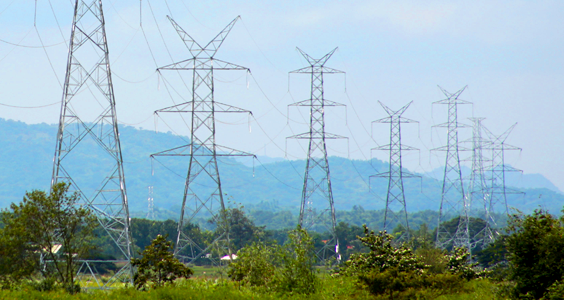Power grid operator, National Grid Corporation of the Philippines (NGCP) has completed the first step towards unifying the nation’s three power grids.
In a press statement, NGCP explained on Thursday that an NGCP-commissioned hydrographic survey conducted from September to November 2016 showed that a viable route along the country’s western seaboard – beginning in Cebu and terminating in Dipolog– was determined as viable for the implementation of the plans of interconnecting the Visayas and Mindanao grids.
The Luzon and Visayas grids have long been connected via NGCP’s Naga – Ormoc High Voltage Direct Current (HVDC) line.
“NGCP is pleased to report that we already finished the hydrographic survey that will determine the route of the Visayas-Mindanao Interconnection Project (VMIP),” declared NGCP. “With this development, we now have a clearer plan on the project’s implementation. Power resource sharing between the country’s major islands will now become a reality.”
According to NGCP, its previous feasibility studies, one dating back to as early as 1984, were deferred by the government, then the grid operator. An earlier study conducted by NGCP revealed eastern routes as unsuitable for submarine cable ground laying because of a significant quantity of live ordinance – torpedoes and high explosive shells – from the Battle of Surigao in 1944, an underwater volcano, fault lines, and seismic hazards, such as unstable rock slabs that can cause landslips and tsunamis.
NGCP is seeking the support of the public and its stakeholders for the full and immediate implementation of the project.
“NGCP assures its stakeholders of the company’s dedication to determine the most reliable and cost-efficient path to completion. This is a large undertaking. We want this facility to be state-of-the-art, as well as sturdy enough to last generations. We are considering many factors in the design and implementation of the project, including changing weather conditions. Ensuring the quality and reliability of power transmission services to both Visayas and Mindanao customers is of paramount importance,” the company stated.
Next steps
With the hydrographic survey result, NGCP will now proceed with the preparation of a conceptual design, detailed cost-estimate, and update of system simulation study using the Cebu-Dipolog route, in order to complete documents needed for its ERC application by April 2017. Inland and route surveys for substations and associated overhead transmission lines will also coincide with the preparation of documents. Barring unforeseen circumstances and unavoidable delays, the project is estimated to be completed by December 2020.
“We need the support of the government, the Energy Regulatory Commission, the Department of Environment and Natural Resources, and the different local government units the project will traverse, among others, to push this forward. With their full support, we are confident that we will be able to complete this project on time,” stated the company.
NGCP is a privately owned corporation in charge of operating, maintaining, and developing the country’s power grid. It transmits high-voltage electricity through “power superhighways” that include the interconnected system of transmission lines, towers, substations, and related assets. The consortium, which holds the 25-year concession contract to operate the country’s power transmission network, is comprised of Monte Oro Grid Resources Corp. led by Henry Sy, Jr., Calaca High Power Corporation led by Robert Coyiuto, Jr., and the State Grid Corporation of China (SGCC) as technical partner.







